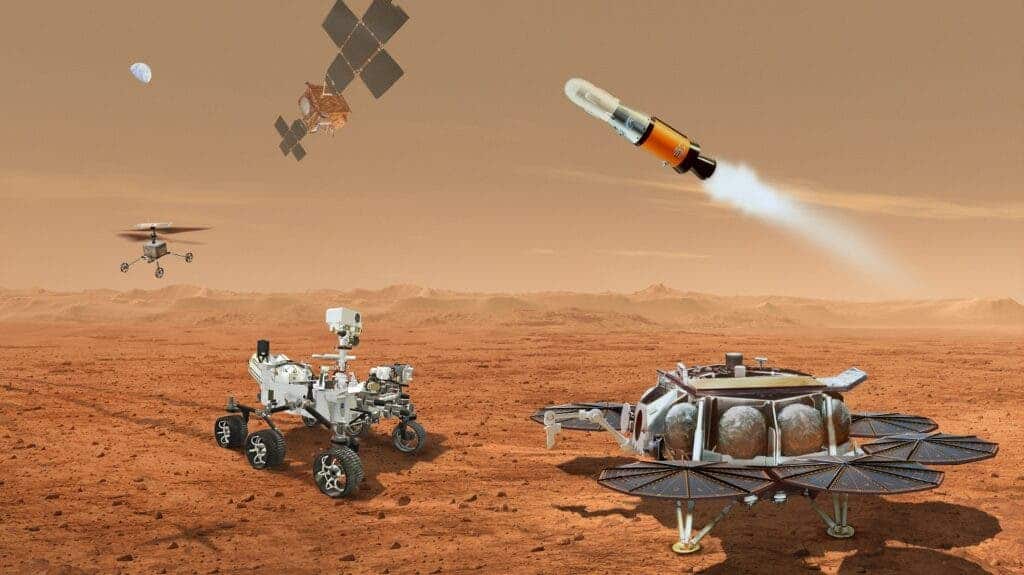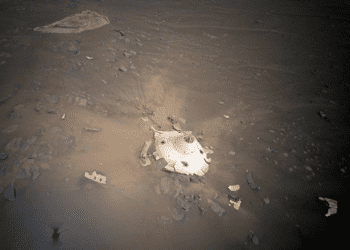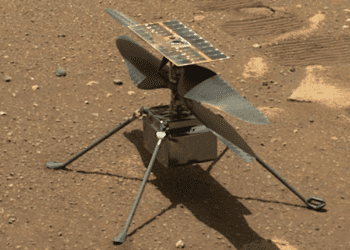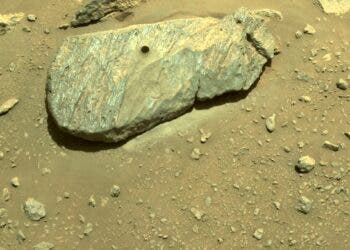
The Ingenuity helicopter worked so well that NASA decided to send more to the Red Planet. Thanks to the little helicopter that could, NASA and the European Space Agency have elected to revise their initial Mars Sample Return Program (MSR), removing a rover and its lander and replacing them with two more Ingenuity-inspired “Marscopters”.
The Sample Fetch Rover, which would have been provided by the ESA, and its associated second lander will no longer be a part of the MSR campaign. Instead, two sample recovery helicopters will be part of the Sample Retrieval Lander (SRL), based on the design of the Ingenuity helicopter, which made 29 flights and has endured for more than a year past its expected lifespan. These Marscopters won’t take center stage, but will act as a secondary capability for retrieving samples stashed on Mars’ surface in the event Plan A with Perseverance fails.
“The conceptual design phase is when every facet of a mission plan gets put under a microscope,” said Thomas Zurbuchen, associate administrator for science at NASA Headquarters. “There are some significant and advantageous changes to the plan, which can be directly attributed to Perseverance’s recent successes at Jezero and the amazing performance of our Mars helicopter.”
With the addition of small wheels at the bottom of the landing legs, the helicopters for the sample return mission would be roughly the same size as Ingenuity. This would enable each helicopter to travel a short distance to straddle a sample, after which a small robotic arm would retrieve the tube.
“There will be landing legs that include, at the bottom of them, mobility wheels,” NASA MSR program manager Richard Cook told reporters during a briefing, saying this new capability will allow the helicopters to “traverse across the surface.” The mini robotic-arm on each of the craft will allow the drones to pick up the sample tubes Perseverance leaves behind, if need be.
The original schedule called for the launch of both the Earth Return Orbiter (ERO) and SRL in 2026. The samples stored by Perseverance would be collected using an ESA-built rover, and they would then be loaded onto a Mars Ascent Vehicle (MAV) and sent into orbit. In 2031, the sample return spacecraft was initialy scheduled to return its cargo to Earth using a system provided by NASA.
However, in traditional NASA fashion, the dates were pushed back and the samples are now anticipated to return to Earth by 2033 with the spacecraft and lander scheduled to launch in the fall of 2027 and the summer of 2028, respectively.
Perseverance, still expected to be in action when the anticipated new lander hits Martian regolith in 2031, will now be the primary mode of transportation, sending 30 samples to the lander with the MAV. A robotic arm provided by ESA will transfer samples from the Perseverance to the launch vehicle.
“Key to our new architecture is a recent assessment of Perseverance’s reliability and life expectancy based on its performance to date,” said Jeff Gramling, director of the Mars Sample Return program at NASA. “We have confidence that the rover will be available to deliver samples to the sample retrieval lander in 2030, when we need it to be.”
Since it landed at Jezero Crater Feb. 18, 2021, the Perseverance rover has collected 11 scientifically compelling rock core samples and one atmospheric sample. The study focuses on a river delta along the crater rim that has since dried up, a likely location for the preservation of ancient life signs.






